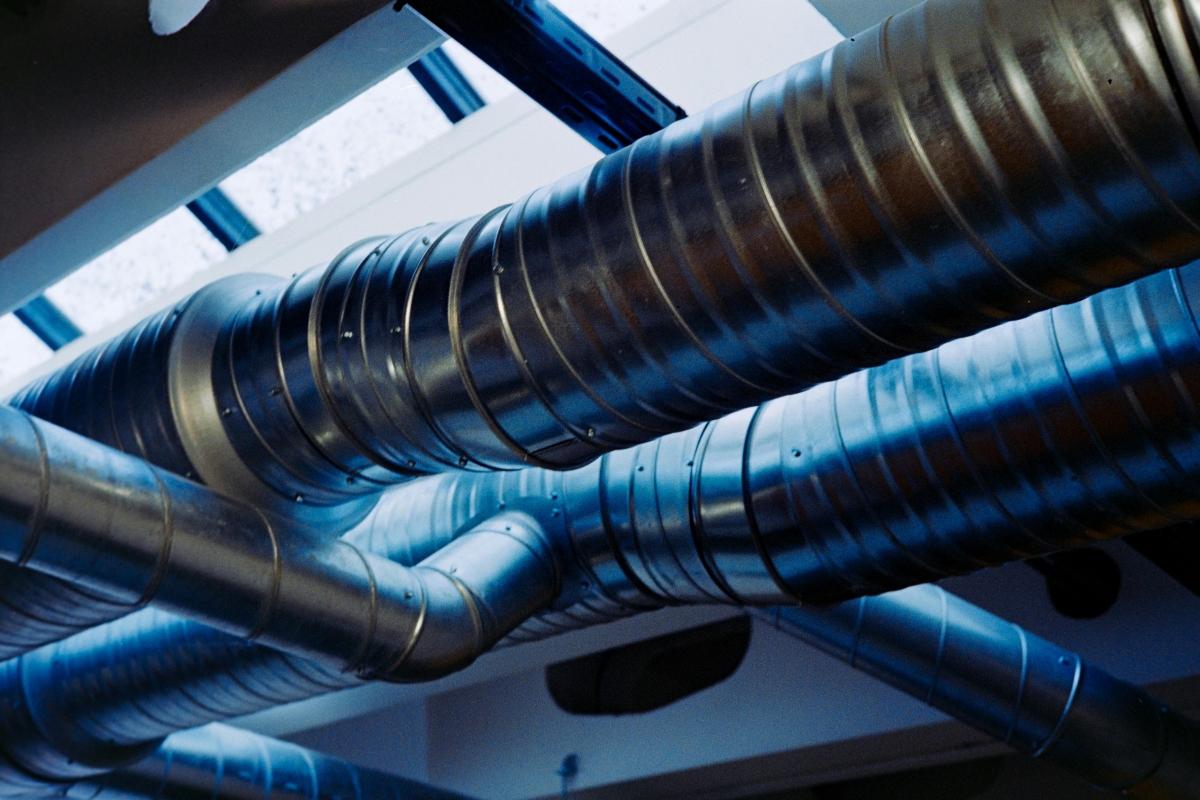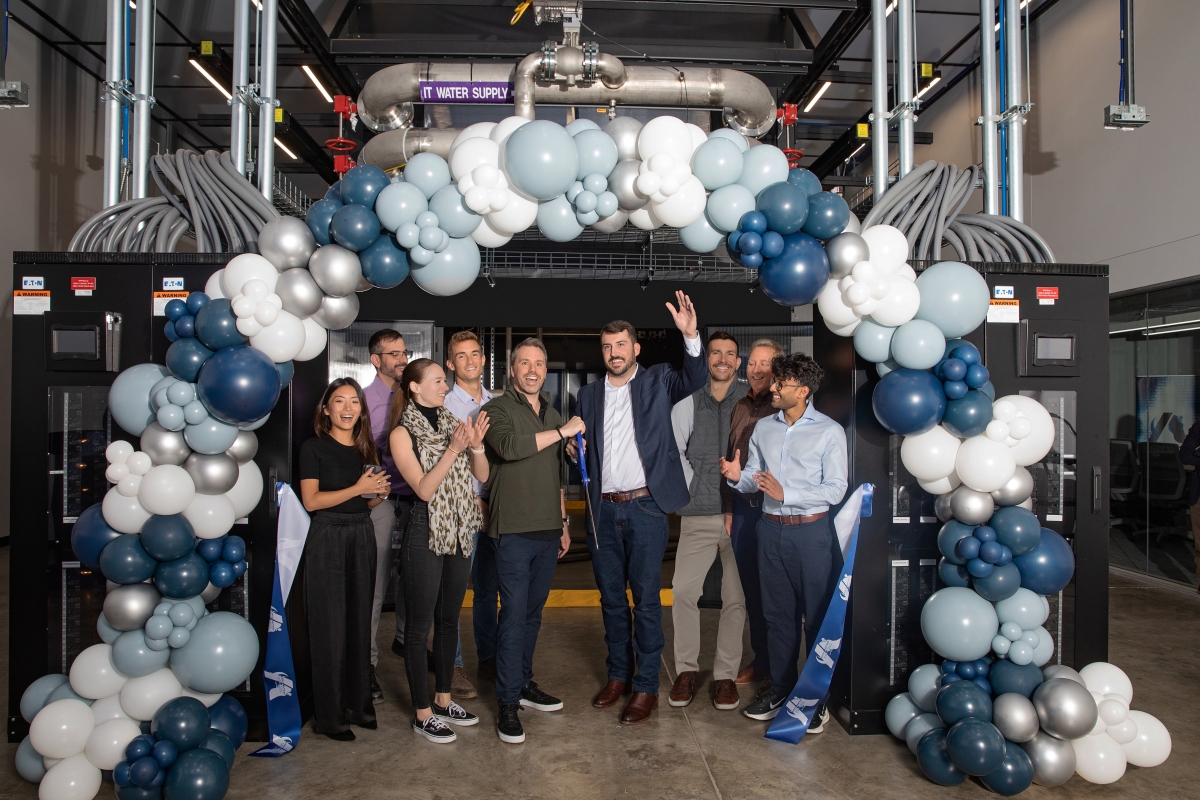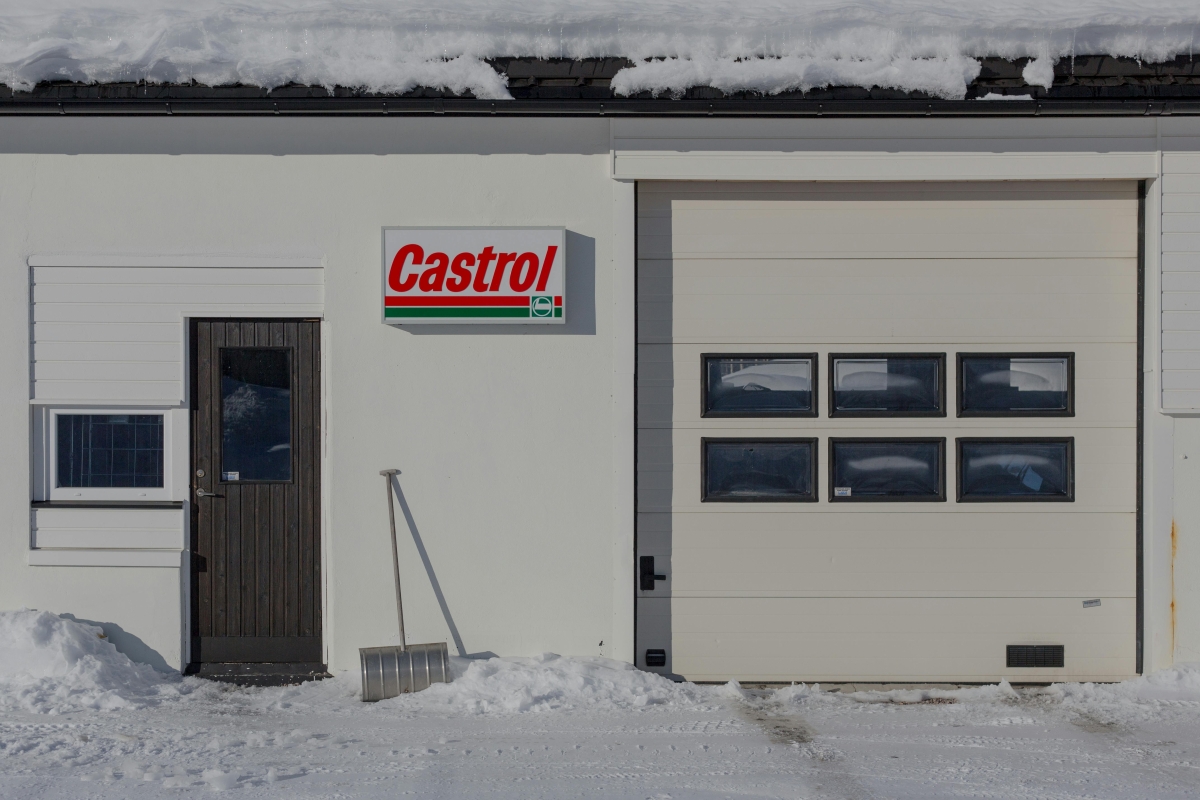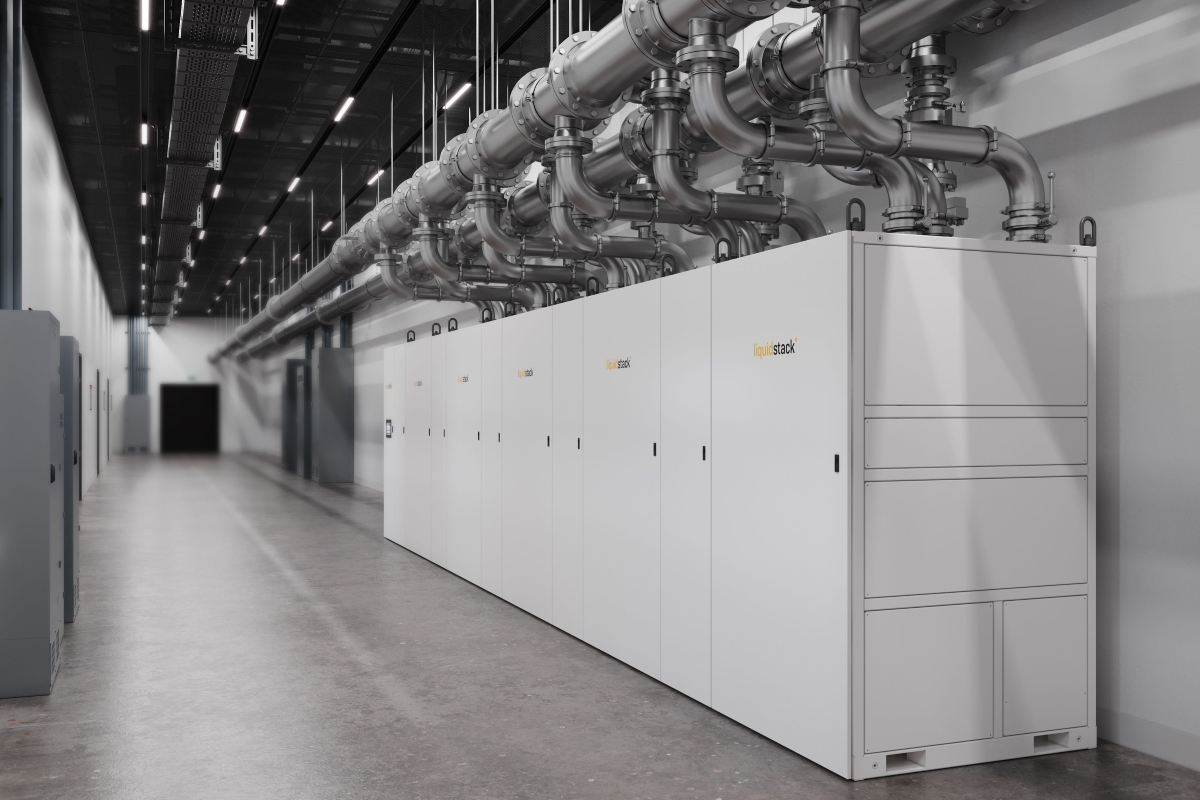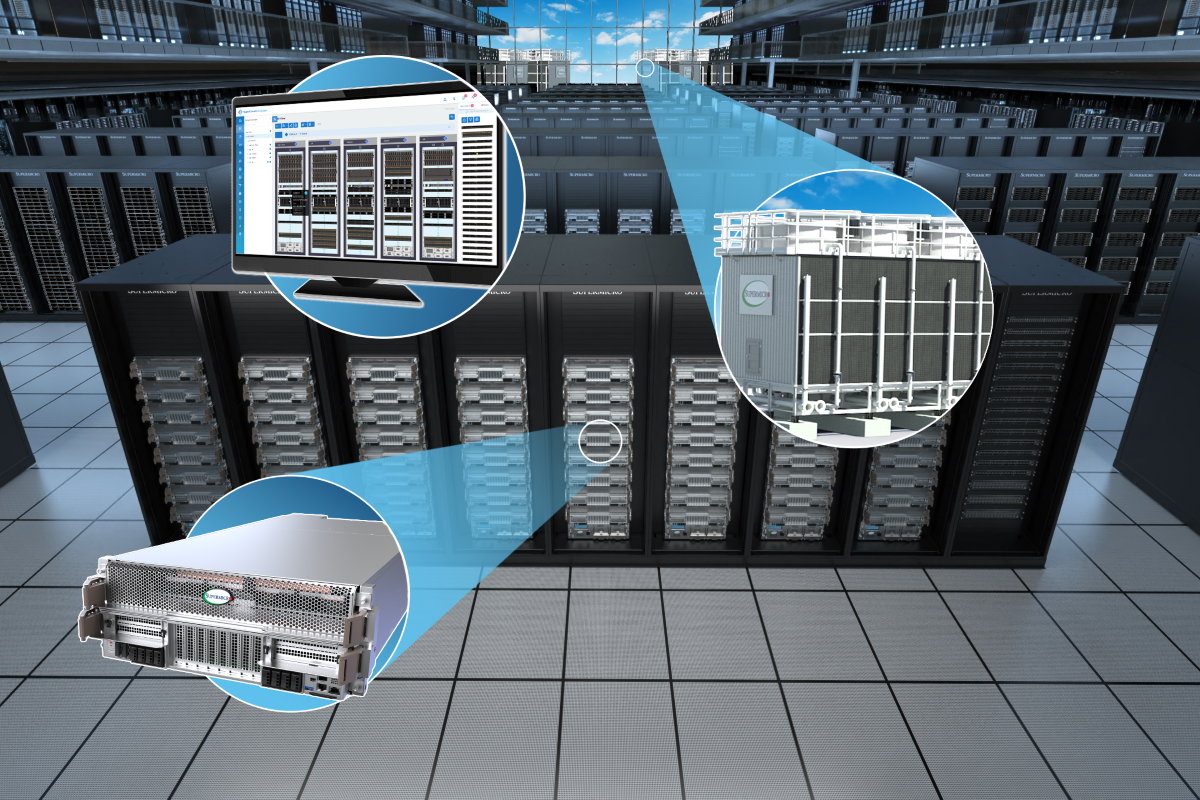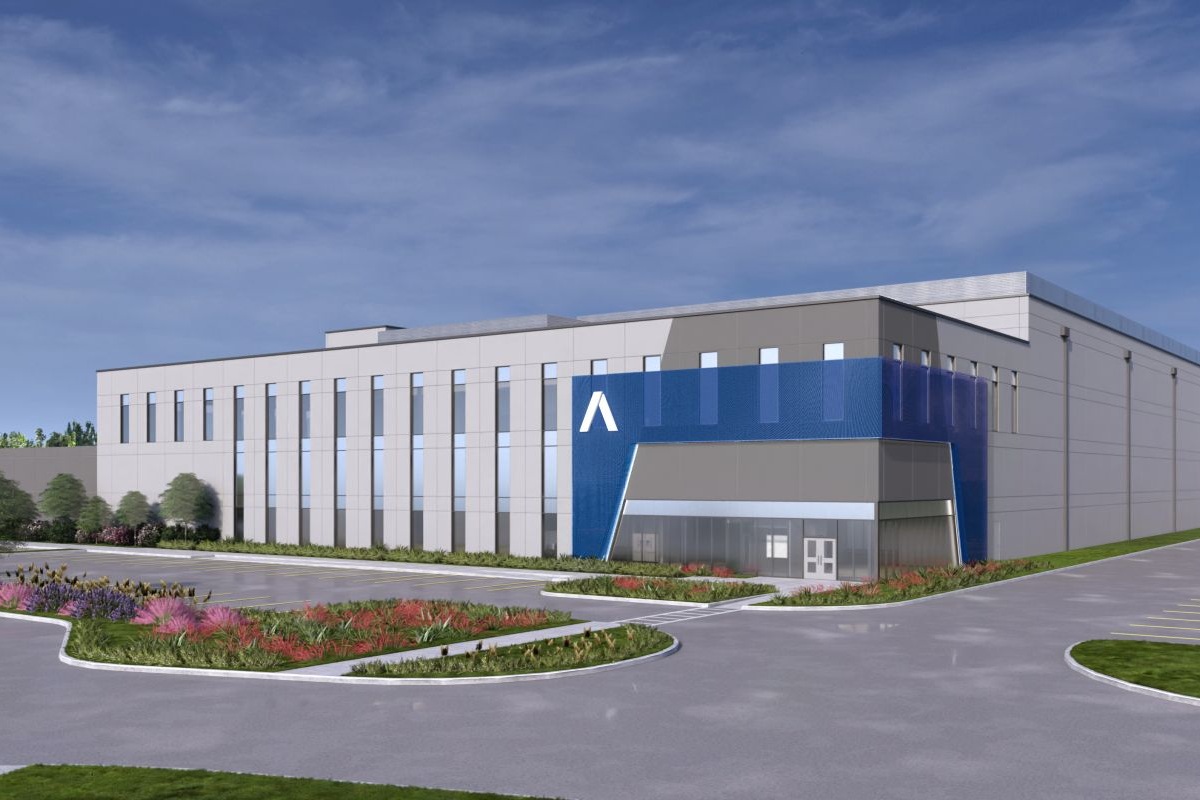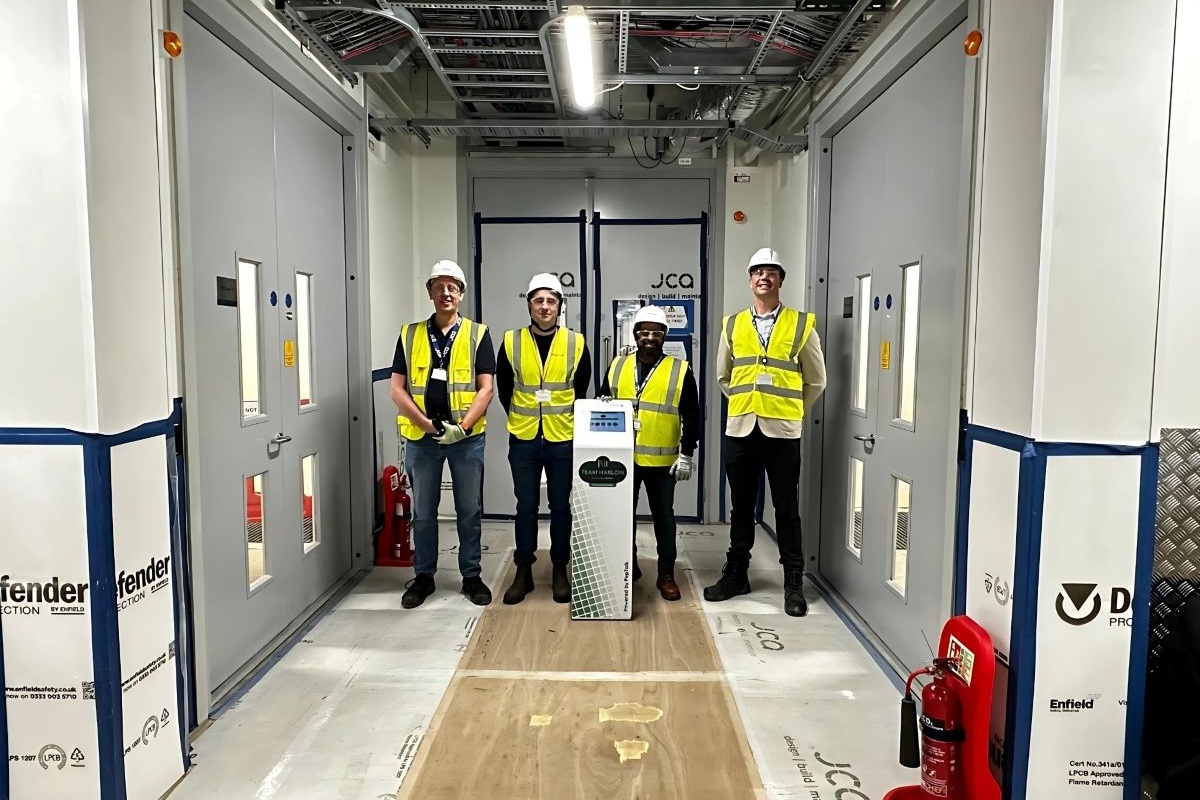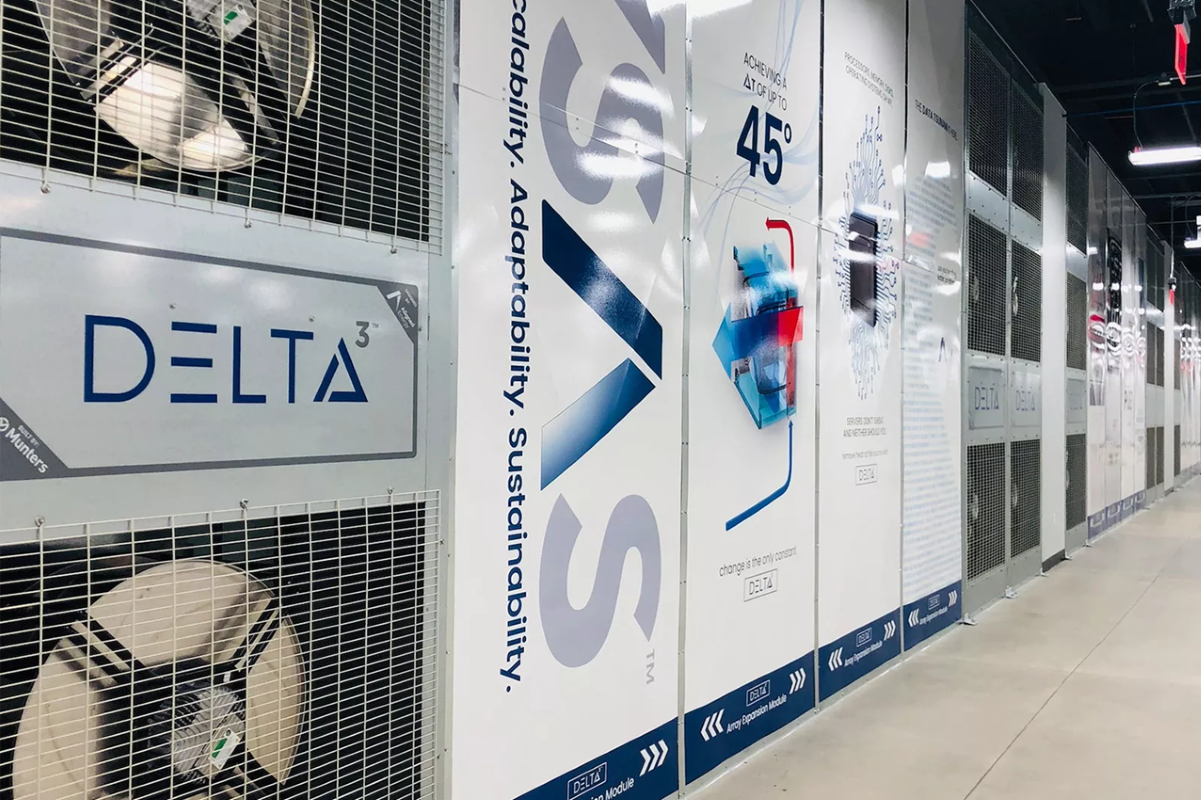Liquid Cooling Technologies Driving Data Centre Efficiency
Cooling
Data Centres
Innovations in Data Center Power and Cooling Solutions
Liquid Cooling Technologies Driving Data Centre Efficiency
Trane expands liquid cooling portfolio
Trane, an American manufacturer of heating, ventilation, and air conditioning (HVAC) systems, has announced enhanced liquid cooling capabilities for its thermal management systems, intended to help data centres become more future-ready. These include new, scalable Coolant Distribution Units (CDU), from 2.5MW to 10MW.
“We are a trusted innovator for mission-critical infrastructure, continuously co-innovating with our customers to design and develop the custom, integrated thermal management systems needed to support sustainable business growth,” claims Steve Obstein, Vice President and General Manager, Data Centers & High-Tech, Trane Technologies. “Through our scalable, modular approach to liquid cooling we can provide a platform for future sustainable capacity growth and thermal load requirements associated with rapidly escalating AI needs.”
The scalable 2.5MW to 10MW platform adds to Trane's 1MW CDU, aiming to give data centres flexible, direct-to-chip cooling capacity to manage high-density computing environments.
The company says it supports operations and uptime throughout the lifecycle of the data centre through its service and network of data-centre-qualified technicians, located in proximity to customers, and Smart Service options for monitoring, predictive maintenance, and energy management.
Key features of the new products include:
• Modular scalability — Supporting cooling capacities up to 10MW, adaptable to data centre sizes.
• Direct-to-chip liquid cooling technology — Optimised for high-density data centres.
• Compact footprint — Provides up to 10MW cooling capacity in a factory-skid-mounted design.
• Service and support — Access to resources and data-centre-qualified technicians from Trane.
For more from Trane, click here.
Joe Peck - 12 June 2025
Cooling
Data Centres
Liquid Cooling Technologies Driving Data Centre Efficiency
News
Aligned debuts its Advanced Cooling Lab
Aligned Data Centers, a technology infrastructure company, has announced the launch of its new Advanced Cooling Lab. The lab is dedicated to testing and developing Aligned’s air and liquid cooling solutions for Graphics Processing Units (GPUs) and emerging AI accelerators.
Aligned's Phoenix-based Advanced Cooling Lab has been designed to promote hybrid cooling environments and advance data centre infrastructure. The company's Delta Cube air-cooled system and DeltaFlow liquid-cooled system aim to ensure customers have the capacity and performance needed for AI and HPC workloads.
“Aligned has been innovating data centre cooling for more than a decade,” says Michael Welch, Chief Technology Officer at Aligned Data Centers. “The Advanced Cooling Lab is a testament to our commitment to delivering cutting-edge data centre solutions and our passion for innovation. By investing in research and development, we can continue to provide our customers with the most flexible and advanced infrastructure available, capable of handling the dynamic demands of AI workloads.”
For more from Aligned, click here.
Joe Peck - 5 June 2025
Cooling
Data Centres
Liquid Cooling Technologies Driving Data Centre Efficiency
News
Castrol launches new fluid management service
Castrol, a British multinational lubricants company owned by BP, known for its presence in the automotive industry, has launched a new fluid management service for data centre liquid cooling, addressing a critical gap as the industry transitions away from traditional air-cooling systems.
Announced at the Datacloud Global Congress 2025 in Cannes, France, Castrol’s new service model aims to cover all four phases of the data centre operation lifecycle: system start-up, ongoing maintenance, break-fix support, and fluid disposal. The approach is designed to help remove operational barriers in the adoption of liquid cooling in data centres.
"Data centre operators recognise the benefits of liquid cooling but need assurance around long-term fluid management," states Peter Huang, Global Vice President of Data Centre Thermal Management at Castrol. "Castrol has delivered fluid services for the automotive industry for decades – we're now bringing this proven expertise to data centres with a service model that supports optimal performance throughout the entire lifecycle.”
The four-phase service includes:1. System start-up support with fluid installation, filtration, system flushing, and certificates of analysis.2. Ongoing maintenance, such as laboratory testing, dynamic monitoring, predictive maintenance, and smart dosing capabilities.3. ‘Break-fix’ service, including telephone assistance, virtual engineering support, on-site response, and spare fluid availability.4. Support with fluid collection and disposal.
Castrol’s service launch comes at a time when the data centre industry faces mounting pressure to improve cooling efficiency. Recent industry research indicates that traditional air-cooling systems struggle to handle increased computing demands from AI and edge computing applications, with 74% of data centre experts believing immersion cooling is now essential to meet current power requirements.
"Our aim with this new service model is to remove the operational and technical uncertainties that have slowed liquid cooling adoption," says Andrea Zunino, Global Offer Development Manager at Castrol. "Within liquid cooling systems, the fluid represents a single point of failure – degraded conditions can reduce cooling capacity and lead to equipment failure. We're going beyond just fluid supply to deliver structured support at every stage, giving data centre operators the confidence they need to embrace liquid cooling.”
The new service model will be deployed globally through Castrol's partner network. All services will be delivered with third-party suppliers. The availability and rollout of certain services may vary by location and may be introduced at different times depending on regional factors.
For more from Castrol, click here.
Joe Peck - 5 June 2025
Cooling
Data Centres
Liquid Cooling Technologies Driving Data Centre Efficiency
News
LiquidStack unveils GigaModular CDU
LiquidStack, a global company specialising in liquid cooling for data centres, today at Datacloud Global Congress unveiled its all-new GigaModular CDU — the industry’s first modular, scalable Coolant Distribution Unit with up to 10MW cooling capacity, made possible through the unit’s modular platform and 'pay-as-you-grow' installation approach.
Driven by dramatic increases in the adoption of AI, cloud computing, and other data-intensive technologies, the global data centre liquid cooling market is predicted to grow from $5.17 billion in 2025 to approximately $15.75 billion by 2030. Simultaneously, the demanding nature of AI workloads is pushing data centre thermal management requirements even further. With hardware such as Nvidia’s B300 and GB300 soon to arrive — and subsequent generations of even more powerful iterations inevitably following thereafter — the need to future-proof cooling capacity has never been greater. These increasingly sophisticated technologies generate far greater heat densities than traditional processing units, with rack power densities already exceeding 120kW per rack, and growing to 600kW by the end of 2027.
"AI will keep pushing thermal output to new extremes, and data centres need cooling systems that can be easily deployed, managed, and scaled to match heat rejection demands as they rise,” says Joe Capes, CEO of LiquidStack. “With up to 10MW of cooling capacity at N, N+1, or N+2, the GigaModular is a platform like no other — we designed it to be the only CDU our customers will ever need. It future-proofs design selections for direct-to-chip liquid cooling without traditional limits or boundaries."
Key features of the LiquidStack GigaModular CDU platform include:
● Scalable cooling capacity: A modular platform supporting single-phase, direct-to-chip liquid cooling heat loads from 2.5MW to 10MW.
● Pump module: An IE5 pump and dual BPHx, alongside dual 25um strainers.
● Control module: A centralised design with separate pump and control modules.
● Instrumentation kits: Centralised pressure, temperature, and EM flow sensors.
● Simplified service access: Serviceable from the front of the unit, with no rear or end access required, allowing the system to be placed against the wall.
● Optional configuration: Skid-mounted system with rail and overhead piping pre-installed or shipped as separate cabinets for on-site assembly.
LiquidStack will showcase the new GigaModular CDU at Datacloud Global Congress in Cannes, France, from 3-5 June at the Palais des Festivals. Attendees can visit LiquidStack at Booth #88 for a VR-driven demonstration.
GigaModular CDU quoting will begin by September 2025 with production in LiquidStack’s manufacturing facilities in Carrollton, Texas (USA).
For more from LiquidStack, click here.
Joe Peck - 3 June 2025
Data Centres
Liquid Cooling Technologies Driving Data Centre Efficiency
News
Supermicro introduces new direct liquid-cooling innovation
Supermicro has announced several improvements to its Direct Liquid Cooling (DLC) solution that incorporate new technologies for cooling various server components, accommodate warmer liquid inflow temperatures, and introduce innovative mechanical designs that enhance AI per watt.
The Supermicro DLC-2 solution reduces data centre power consumption by up to 40% compared to air-cooled installations. These advanced technologies enable faster deployment and reduced time-to-online for cutting-edge liquid-cooled AI infrastructure. Additionally, the total cost of ownership decreases by up to 20%. The comprehensive cold plate coverage of components allows for lower fan speeds and fewer required fans, significantly reducing data centre noise levels to approximately 50dB.
"With the expected demand for liquid-cooled data centres rising to 30% of all installations, we realised that current technologies were insufficient to cool these new AI-optimised systems," says Charles Liang, President and CEO of Supermicro. "Supermicro continues to remain committed to innovation, green computing, and improving the future of AI, by significantly reducing data centre power and water consumption, noise, and space. Our latest liquid-cooling innovation, DLC-2, saves data centre electricity costs by up to 40%."
Supermicro aims to save 20% of data centre costs and apply DLC-2 innovations as part of data centre building block solutions to make liquid-cooling more broadly available and accessible.
A significant component of the new liquid-cooling architecture is a GPU-optimised Supermicro server, which includes eight NVIDIA Blackwell GPUs and two Intel Xeon 6 CPUs, all in just 4U of rack height. This system is designed to support increased supply coolant temperatures. This unique and optimised design incorporates cold plates for CPUs, GPUs, memory, PCIe switches, and voltage regulators. This design reduces the need for high-speed fans and rear-door heat exchangers, thereby lowering cooling costs for the data centre.
The new Supermicro DLC-2 stack supports the new 4U front I/O NVIDIA HGX B200 8-GPU system, and the in-rack Coolant Distribution Unit (CDU) has an increased capacity of removing 250kW of heat generated per rack. The Supermicro DLC-2 solution also utilises vertical coolant distribution manifolds (CDMs) to remove hot liquid and return cooler liquid to the servers for the entire rack. The reduced rack space requirements enables more servers to be installed, increasing computing density per unit of floor space. The vertical CDM is available in various sizes, precisely matching the number of servers installed in the rack. The entire DLC-2 stack is fully integrated with Supermicro SuperCloud Composer software for data centre-level management and infrastructure orchestration.
The efficient liquid circulation and nearly full liquid-cooling heat capture coverage, at up to 98% per server rack, allow for an increase in the inlet liquid temperature at up to 45°C. The higher inlet temperature eliminates the need for chilled water, chiller compressor equipment cost, and additional power usage, saving up to 40% of data centre water consumption.
Combined with liquid-cooled server racks and clusters, DLC-2 also offers hybrid cooling towers as well as water towers as part of data centre building blocks. The hybrid cooling towers combine the features of standard dry and water towers into a single design. This is especially beneficial in data centre locations with strong seasonal temperature variation to reduce usage of resources and costs further.
Supermicro serves as a comprehensive one-stop solution provider with global manufacturing scale, delivering data centre-level solution design, liquid-cooling technologies, networking, cabling, a full data centre management software suite, L11 and L12 solution validation, onsite deployment, and professional service and support. With production facilities across San Jose, Europe, and Asia, Supermicro offers unmatched manufacturing capacity for liquid-cooled rack systems. This ensures timely delivery, reduced total cost of ownership (TCO), and consistent quality.
For more from Supermicro, click here.
Simon Rowley - 15 May 2025
Data Centre Infrastructure News & Trends
Data Centres
Infrastructure Management for Modern Data Centres
Liquid Cooling Technologies Driving Data Centre Efficiency
News
Aligned and Lambda to power next-gen AI infrastructure
Aligned Data Centers, a technology infrastructure company offering innovative, sustainable and adaptive scale data centres and build-to-scale solutions for global hyperscale and enterprise customers, has announced a partnership with Lambda, the AI developer cloud, to provide customers with data centre infrastructure and an AI cloud platform ready to sustainably accelerate their AI growth. Lambda will occupy Aligned’s newest Dallas-Fort Worth area facility, DFW-04, which will be designed to be a liquid-cooled data centre capable of supporting the highest-density Graphics Processing Units (GPUs).
“We’re proud to partner with Lambda to support the buildout of its GPU cloud infrastructure, accelerated by NVIDIA, for AI deployments, which is transforming how AI developers innovate and businesses utilising AI models operate,” states Andrew Schaap, CEO of Aligned. “Particularly in Dallas, where demand for AI computation space has spiked interest in a growing market, combining a GPU cloud built specifically for AI workloads with an AI-ready data centre designed with liquid cooling technologies capable of supporting the highest-density environments will be a game changer.”
Aligned is at the forefront of building and operating adaptive data centres that future-proof IT infrastructure and provide seamless flexibility for transitions between a variety of deployments ranging from enterprise applications, to cloud, and high-density AI implementation. The company’s ultra-scalable and flexible Adaptive Modular Infrastructure (AMI) and innovative air, liquid, and hybrid cooling solutions future-proof IT deployments, mitigate IT obsolescence, and maximise asset lifespan.
While committing to sustainability as a core pillar of its customer-focused business strategy, the company has been advancing data centre energy efficiency and cooling technologies for more than a decade, including its patented Delta3 air-cooled system. Aligned's patent-pending DeltaFlow liquid cooling system delivers excellent performance for AI innovation, supporting virtually any density and GPU cloud requirement, and the company’s scalable, sustainable infrastructure is enabling next-generation AI workloads. Aligned says that its partnership with Lambda exemplifies its dedication to leading AI service providers.
Lambda's AI Developer Cloud is used by AI engineers and industry experts who have shaped modern artificial intelligence. The partnership with Aligned will see Lambda’s AI Cloud platform integrated into the company’s new DFW-04 data centre, which is currently under construction in Plano, Texas. A determinative factor of this alliance is that Aligned’s seamless and adaptive infrastructure for next-gen AI will easily support infrastructure accelerated by NVIDIA Blackwell and NVIDIA Blackwell Ultra, as well as the future generations of AI platforms.
“With its unrelenting focus on driving disruptive innovation in data centre design, energy efficiency and cooling, Aligned is the ideal partner to help Lambda build large, flexible space that meets the AI demands of today and tomorrow,” comments Lambda VP, Data Center Infrastructure, Ken Patchett. “Deploying AI at scale is no easy feat, and Aligned’s ability to rapidly deliver AI-ready infrastructure, along with its passion for supporting customers with a consistently high-touch, world-class experience, is instrumental to meet the aggressive scale, quality and speed standards Lambda sets for its public and private deployments.”
For more from Aligned Data Centers, click here.
Simon Rowley - 8 May 2025
Data Centres
Liquid Cooling Technologies Driving Data Centre Efficiency
News
Kao Data and PepTalk to champion culture at new data centre
Kao Data, a specialist developer and operator of data centres engineered for AI and advanced computing, has partnered with JCA Engineering and global workforce engagement platform, PepTalk, to bring a first-of-its-kind, people-first approach to the construction of its new KLON-03 data centre, which allows AI users to deploy multi-megawatts (MWs) of direct-to-chip, liquid cooled infrastructure, alongside traditional air-cooled servers within the same Technology Suite.
As AI workloads continue to reshape global infrastructure demands, Kao Data is setting a new benchmark - combining cutting-edge engineering with a proactive focus on team wellbeing, safety, and performance. By embedding PepTalk’s real-time workforce intelligence into daily site operations, the project aims to elevate decision-making, anticipate risks early, and foster a stronger, safer site culture from the ground up.
PepTalk’s platform gathers live, anonymous feedback directly from the workforce, offering leadership a constant pulse on team morale, communication, and engagement. Instead of using feedback purely as a sentiment check, the system enables site managers to identify blind spots, unlock opportunities for improvement, and build a shared culture of accountability.
“As we build KLON-03, one of the UK’s most advanced AI-ready facilities, we want the same high standards applied to our technology reflected in the way we support people on site,” says Gavin Fernandez, Commercial & Delivery Director at Kao Data. “PepTalk’s insight helps us stay close to what matters - safety, morale, and team alignment - so we can deliver smarter and faster, with care.”
PepTalk has supported major construction projects across Europe and the US, helping reduce incidents, improve retention, and drive measurable cultural improvements.
“This partnership with Kao Data and JCA Engineering reflects a shared belief that world-class infrastructure is built not just by engineers, but by engaged, motivated teams,” says James Brogan, CEO and Co-founder of PepTalk. “With PepTalk embedded from day one, KLON-03 is leading the way in how culture can power performance.”
For more from Kao Data, click here.
Simon Rowley - 30 April 2025
Cooling
Data Centres
Liquid Cooling Technologies Driving Data Centre Efficiency
News
Arteco launches direct-to-chip liquid cooling for data centres
Arteco, a provider of liquid cooling innovations, today announced its expansion into the data centre and electronics market with its Zitrec EC brand.
The company states that the new brand arrives at a "critical moment", citing the escalating computational demands of today’s powerful technologies - like Generative AI and Large Language Models - which produce unprecedented heat loads which are threatening system performance, energy efficiency, and hardware reliability in the event that improved thermal management solutions aren't implemented.
Zitrec EC, which is a versatile portfolio of Mono Propylene Glycol (MPG)-based, water-based and Mono Ethylene Glycol (MEG)-based formulations with OAT (Organic Additive Technology), is specifically designed to help tackle these challenges. This advanced range of direct-to-chip coolants is engineered to deliver exceptional thermal performance and energy efficiency, allowing components to operate at higher calculating power without the risk of overheating. Its advanced features provide long-lasting corrosion protection, which can extend equipment lifespan and provide a safeguard against downtime. Zitrec EC therefore simplifies hardware maintenance, Arteco says, while significantly lowering the total cost and complexity of thermal management systems.
“In this incredibly exciting era of AI and other technological advancements, we recognised a clear opportunity to combine our decades of cooling expertise with our relentless pursuit of innovation and sustainability, thereby empowering the digital infrastructure of tomorrow,” says Serge Lievens, Technology Manager at Arteco.
Alexandre Moireau, General Manager of Arteco, adds, “Our biggest strength in this new Zitrec EC chapter is the same unwavering commitment to product excellence and deep customer intimacy that established us as a trusted leader in the automotive world. In the data centre space, we will continue to proactively co-create with our customers, delivering tailored cooling solutions that meet, and exceed, their most demanding requirements. This is how we want to set new standards in thermal management in the data center and electronics market.”
As part of its broader sustainability strategy, Arteco has also announced the upcoming launch of a new bio-based MPG addition to its new Zitrec EC line. This new product complements the existing recycled MPG variant, underscores Arteco’s commitment to environmentally responsible innovation and offers the same product performance and quality as the other products in the Zitrec EC range.
For more from Arteco, click here.
Simon Rowley - 29 April 2025
Cooling
Data Centres
Liquid Cooling Technologies Driving Data Centre Efficiency
News
Aligned Data Centers breaks ground on Glendale facility
Aligned Data Centers, a technology infrastructure company offering innovative, sustainable and adaptive scale data centres and build-to-scale solutions for global hyperscale and enterprise customers, has broken ground on its PHX-13 facility.
The Glendale campus spans 100 acres and represents a significant expansion of Aligned's data centre footprint, the company tells us. At the heart of this development is PHX-13 - one of four planned facilities for the site. To support the campus’s energy needs, the project will incorporate a new 230 kV transmission line provided by Arizona Public Service (APS).
“I am excited to see PHX-13 break ground,” says Glendale Mayor, Jerry P. Weiers. “In 2025, data centres are essential to the US economy and future growth. This project and all the benefits it will bring are exciting for our Glendale community.”
Aligned says that is committed to sustainability and operational efficiency. The company’s Delta³ air cooling arrays will be utilised in PHX-13 to capture and remove heat at the source, rather than pushing cold air into the data hall like legacy facilities. The data centre will also feature Aligned's patent-pending DeltaFlow liquid cooling system, which delivers excellent performance for AI workloads and supports virtually any density and GPU cloud requirement. Additionally, Aligned will use its closed-loop cooling system, recycling water to significantly reduce water consumption.
All of Aligned’s power comes from renewable sources, actively progressing toward the goal of achieving zero-carbon hosting by 2040. In line with this commitment, the Glendale campus is a model of sustainable redevelopment. The site, once a rose farm, has been transformed into a state-of-the-art data centre campus, resulting in a more than 73% reduction in annual water use.
Aligned retained the site's unused well rights, allowing groundwater to remain on-site and supporting local ecological balance.
This facility, like all of Aligned’s data centres, will leverage its Adaptive Modular Infrastructure (AMI), compared to traditional, stick-built methods. By prefabricating components offsite and delivering them to the site as required, Aligned is enhancing safety, quality, sustainability, and speed. This modular design and construction methodology provides exceptional flexibility, ensuring the longevity of Aligned asset's and delivering lasting benefits to the Glendale community.
For more from Aligned Data Centers, click here.
Simon Rowley - 22 April 2025
Data Centre Infrastructure News & Trends
Data Centres
Liquid Cooling Technologies Driving Data Centre Efficiency
News
Vertiv announces launch of prefabricated infrastructure portfolio
Vertiv, a global provider of critical digital infrastructure and continuity solutions, has announced the launch of Vertiv SmartRun.
Vertiv SmartRun is a modular prefabricated overhead infrastructure system designed to integrate high-density power distribution busbar, liquid cooling piping network, hot-aisle containment, and network infrastructure into a single, scalable solution, supporting an accelerated data centre fit-out.
This all-in-one solution is designed to reduce complexity and accelerate deployment times of cloud and AI training applications for greenfield and retrofit colocation and hyperscale data centres.
Deploying Vertiv SmartRun delivers significant advantages in scalability and efficiency, Vertiv states, providing end-to-end speed and adaptable configurations to meet various design requirements. With prefabricated assembly, plug-and-play design, and a simplified one-lift installation process, Vertiv SmartRun can deploy up to 85% faster on-site than traditional stick-build methods, enabling data centre installations greater than 1MW per day with just a single crew. The pre-designed system reduces labour needs for engineering review and installation of busway, piping, network cabling, and hot-aisle containment systems, offering a streamlined approach to integrating overhead infrastructure.
The system also addresses the whitespace challenges of incorporating new heat removal technologies into AI data centres, by integrating a secondary fluid network into the Vertiv SmartRun design. Prefabricated stainless steel piping systems mitigate complexity of design, fabrication, and start-up, providing a single source for end-to-end data centre liquid cooling support.
“As digital infrastructure demands evolve, organisations require solutions that accelerate growth without adding complexity,” says Viktor Petik, Senior Vice President, Infrastructure Solutions at Vertiv. “Vertiv SmartRun is a strategic investment in high-density, prefabricated infrastructure that brings operational agility and enables seamless expansion to support the future of high-density computing.”
Vertiv SmartRun is backed by Vertiv Liquid Cooling Services and Vertiv Services, a global network of trained experts available to provide comprehensive support for the installation, maintenance, and optimisation of liquid cooled infrastructure, supporting efficient thermal management and long-term reliability in high-density environments.
For more from Vertiv, click here.
Simon Rowley - 15 April 2025

Head office & Accounts:
Suite 14, 6-8 Revenge Road, Lordswood
Kent ME5 8UD
T: +44 (0)1634 673163
F: +44 (0)1634 673173
